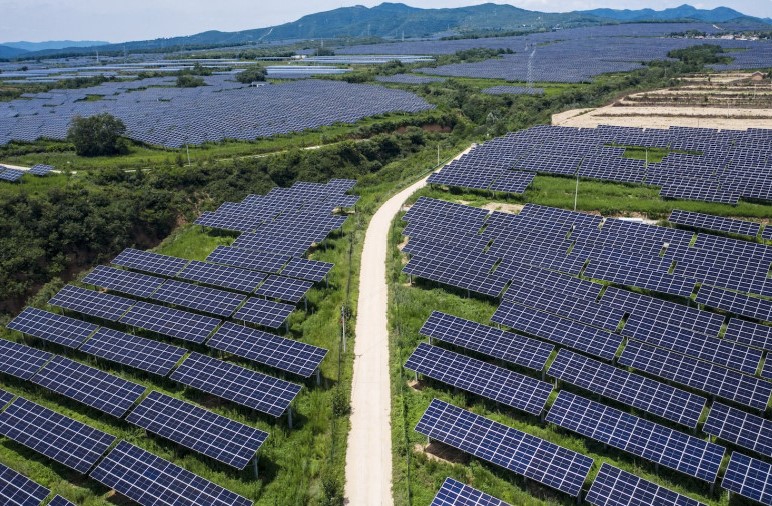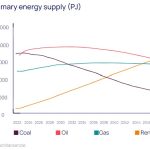Solar panels are seen at a power plant co-owned by Longi Green Energy Technology Co and China Three Gorges Corp at Tongchuan in Shaanxi province of China. (Photo: Bloomberg)
Source: Bangkok Post
China installed more solar panels in 2023 than any other country has built in total, adding to a massive renewable energy fleet that is already leading the world by a wide margin. The country added 216.88…
China installed more solar panels in 2023 than any other country has built in total, adding to a massive renewable energy fleet that is already leading the world by a wide margin. The country added 216.88 gigawatts of solar power last year, blowing away its previous record of 87.4GW from 2022, the National Energy Administration said in a statement. That’s more than the entire solar output of 175.2GW in the United States, the world’s second-biggest solar market, according to estimates by BloombergNEF.
China also added 75.9GW of wind power, up from 37.6GW the year before, also a record. A surge in clean energy in China, the world’s top polluter, helped to drive global adoption of renewables to a record 510GW last year, according to the International Energy Agency. Nations are getting closer to a pathway needed to meet the target set at the COP28 climate summit to triple renewable power by the end of the decade, the IEA said.
China probably accounted for 58% of global solar installations and 60% of global wind last year, according to BNEF.
Additions of renewables mean China can burn less coal to meet rising energy demand, and the shift has led to estimates that emissions in the world’s top polluter may have peaked last year, well ahead of the government’s 2030 target.
Still, China is continuing to add to its huge network of coal-fired power stations, which provide about 59% of the country’s electricity. Officials insist new plants are needed mainly to serve as backup for intermittent solar and wind generation, and that coal consumption will decline from 2025. Thermal generation capacity increased by 57.93GW last year, the NEA said.
Solar and wind installations were spurred in part by steep cost declines as fierce competition among manufacturers has pushed prices of panels and turbines in China to record lows. That has squeezed profitability for manufacturers and raised expectations of major consolidation across the industry this year.
The acceleration of renewable generation is also creating challenges as China’s grid struggles to keep pace. Some regions face a lack of infrastructure capacity to absorb more solar power and have begun implementing stricter regulations on new projects.
Even so, China is expected to sustain the gains in renewables. Solar installations are expected to rise about 7% this year, while new wind capacity is seen increasing 11%, BNEF forecasts.









